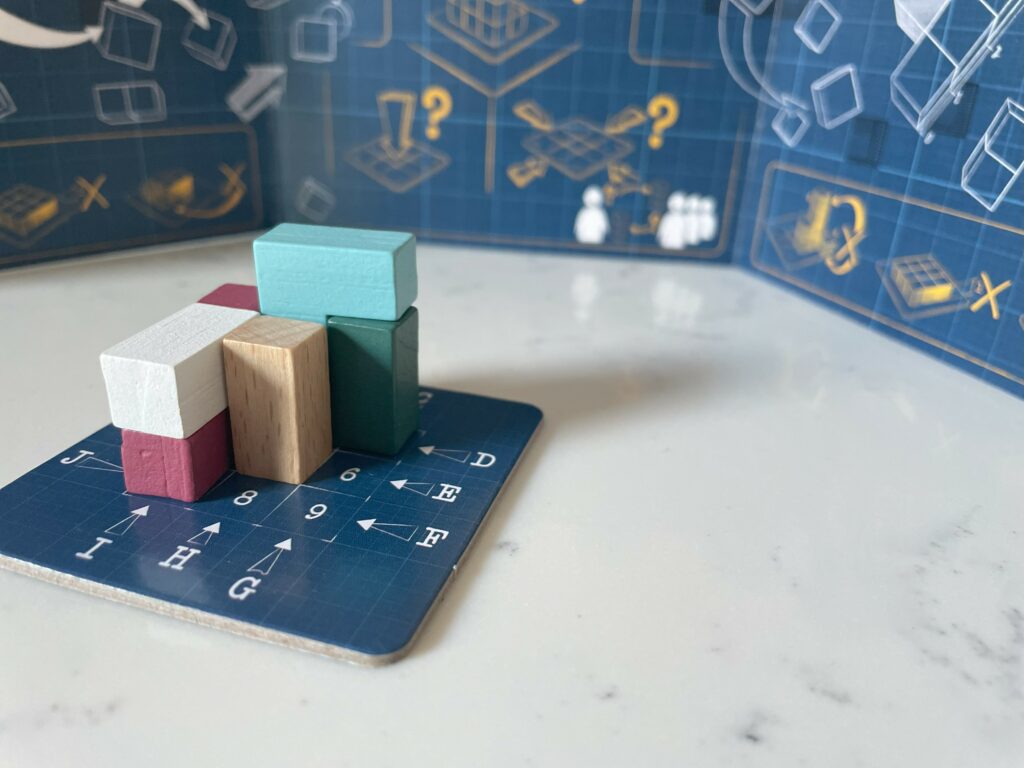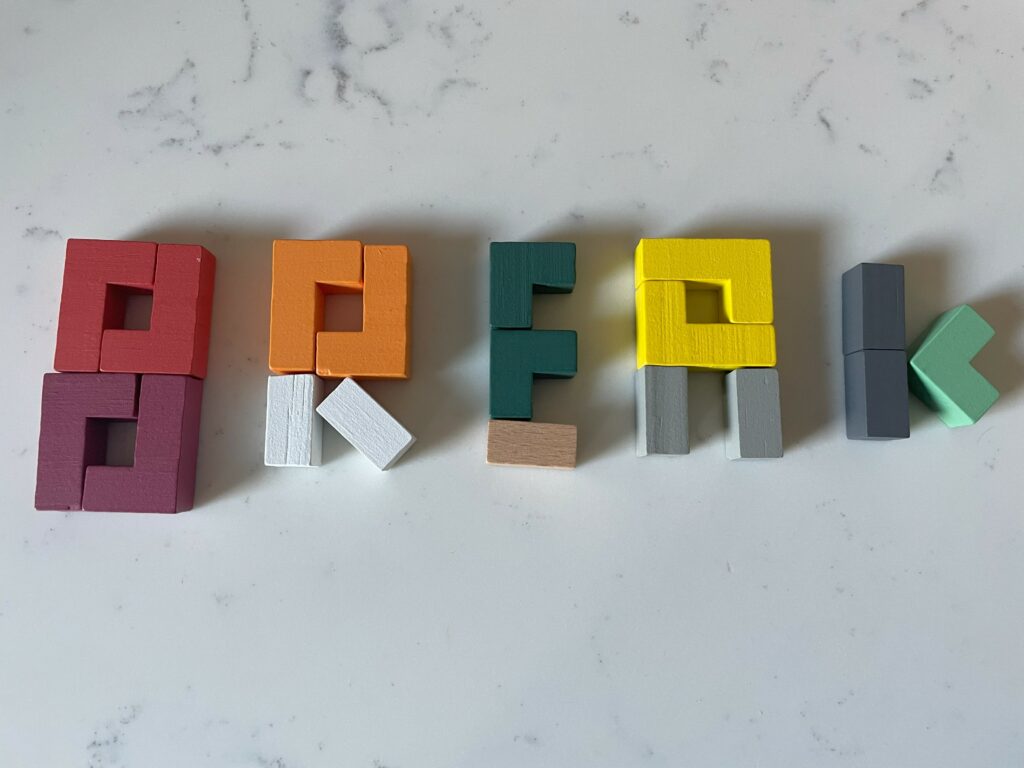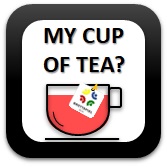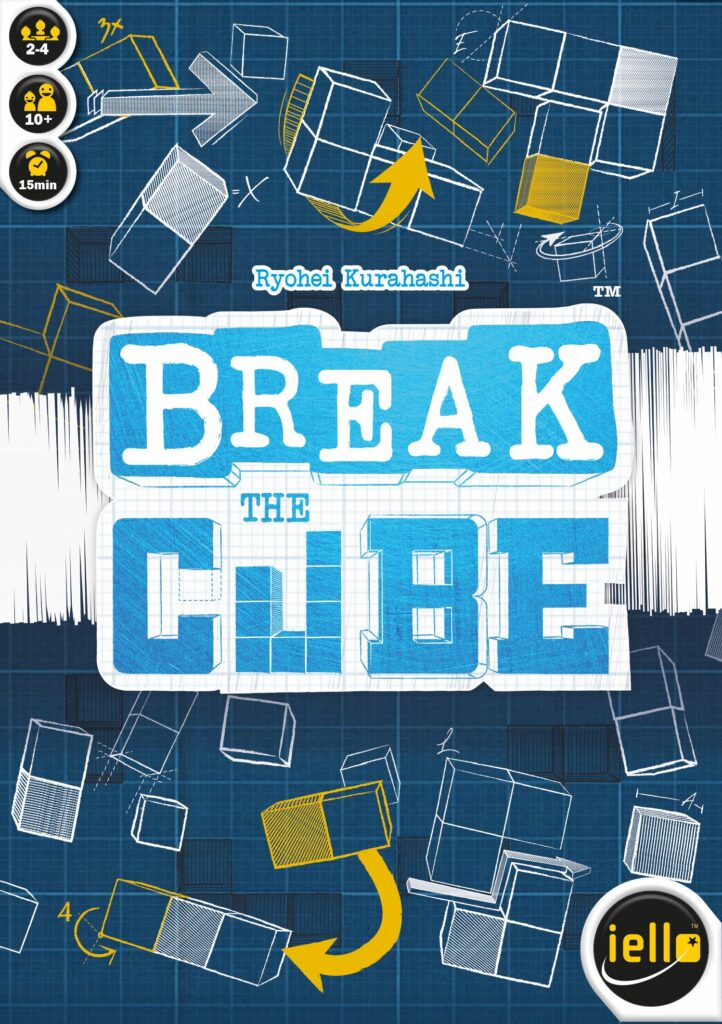Break the cube It is the spiritual successor to Breaking the Code by Ryohei Kurahashi, both published by IELLO. I often play Break the Code online and have learned to really appreciate it. That's why I was very happy to take this successor to SPIEL 23. Naturally, expectations were very high. if Break the cube You can read about it below.
Tim
Game description
The game is based on a simple premise: players create a shape using the pieces available behind the screen and then try to be the first to guess their neighbor's shape through a series of questions. Whoever does this first wins.
At the beginning of the game, we take 3 pieces of different colors and shapes and give the same 3 pieces to our neighbor. This means that each person now has 3 pieces of their own behind their screen and 3 pieces – with the same shapes but different colors – from one of their neighbors in front of their screen.
Now we build a shape from the three parts on the card. This card shows a 3×3 grid on which pieces are placed. Each square in the grid has a number (1-9) and each row and column has a letter (AL). Everyone must observe the following building rules:
- The shape must be no more than 3 squares in size in any direction (including height);
- No part should be “hanging in the air.”
- The bottom layer cannot fill the entire 3×3 grid


Now that we've built our shapes, we need to recreate our neighbor's shape using the three parts. To do this, we take turns asking one of the following three questions:
- What do you see with the number X?
- What do you see with the letter Y?
- Does the shape you built match yours exactly?
“What do you see with the number and the field can of course be empty as well, which we then have to state truthfully.
“What do you see in the letter Y?” A little harder because everyone (including the questioner) has to answer this question. Here we describe the view from the side along the selected row or column. So these colors can be up to three different colors.
“Does the shape I built match yours exactly?” Of course it is only released after some information has already been revealed. As the game progresses, we use the pieces in front of our screen to recreate the shape we want to guess. If we believe this model is the right one, we use our part to solve the problem. If the answer is “no”, the game simply continues. If there is an exact match, the active player wins the game and the game continues until everyone has the same number of moves.
The game also offers some variants for different gaming experiences. So we can use the attached board to take notes or use an incorrect solution to remove the guesser from the game. When playing with two people, the instructions also suggest a more complex game involving more than 3 pieces. In addition, strong players can play with a handicap and e.g. For example, you may guess a larger shape while the other player may be able to take notes.


Author: Ryohei Kurahashi ■ Artist: Linig Burguan
Publisher: IELLO ■ Publication year: 2022




2-4 players


From 10 years


About 15-30 minutes
Game rules (External link to BGG)


Gaming feeling
Break the cube It brings something new to the world of deduction games. The idea of guessing what shape your neighbor built is very exciting at first. I'm a fan of deduction games and I'm glad I got to solve a 3D puzzle here – as quickly as possible. I also always ask myself whether I should ask for the number or the message. Of course I get more information from the message and also provide more information. In this sense, the question about the number provides the best ratio of “information gained” to “information given.”
Unfortunately, this consideration also reveals the game's first weakness – the number of players. With two people, I can easily estimate what information I will reveal if I ask for a particular message. But with three or four people, I don't know what others should disclose and how it can help their neighbors. So it can happen that with an unfortunate choice suddenly I help a completely different person win.
Furthermore, a small 3D puzzle of 3 pieces is almost trivial for experienced players of deduction games and can be solved with just a few questions. The 5-part game is more demanding – which is why I prefer it. Due to the material, this version can only be played with two people Break the cube For me it's just a game for two people.


Every now and then there are “ship sinking” moments in the game. For example, if I simply placed one of my pieces vertically, my neighbor would either have to go through several letters and thus reveal a lot of information to me, or go through numbers so that I would have to report a “hit.” Unfortunately, this obscures the beautiful visual of a 3D puzzle sinking into a 2D ship.
This seems very negative at first. However, as an opponent fan, I love it Break the cube very fun. The combination of elicitation and model building has great appeal and offers enough to keep coming back to the table. Given the small box size and short play time, it became a travel game for two and we learned to appreciate it, even if Break the Code was no substitute.


summary
Break the cube It offers simple gameplay that is easy to learn but still fun. You have to think about how to rotate and build the pieces to create a hard-to-guess shape, and then recreate your neighbor's shape by asking smart questions. If you like deduction games and are looking for a little game – especially for two people – then I can do it for you Break the cube recommend.






- Simple rules
- Quick and easy to take with you
- Integrating deduction and model building


- The feeling of “ships sinking”.
- Loses with more than 2 players


Break the cube It didn't replace breaking the code for me. But it certainly remains in the collection as a lovely two-person puzzle.

“Explorer. Communicator. Music geek. Web buff. Social media nerd. Food fanatic.”






More Stories
Who is the band Gojira that will perform at the Olympics opening ceremony?
SpaceX Moves Crew Dragon Spacecraft to West Coast After Multiple Space Debris Incidents
Stathis Karapanos – Hindemith Review: Complete Works for Flute